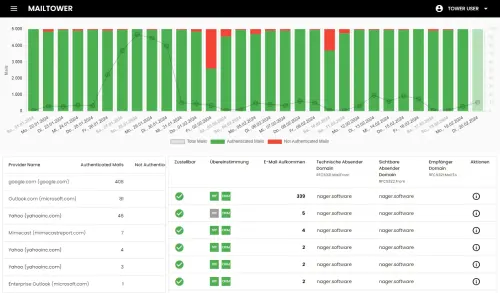Feature set
Mail Tower offers a comprehensive suite of DMARC reporting features, designed to give users deep insights into their email ecosystem. We found its aggregate reports to be particularly detailed, breaking down traffic by source, authentication results, and disposition.
The platform also includes strong forensic reporting capabilities, allowing us to investigate specific email failures, which is crucial for identifying and mitigating spoofing attempts. Its policy management tools are robust, guiding users through the transition from monitoring to enforcement with helpful, actionable steps.
DMARCLytics provides a solid set of core DMARC reporting functionalities, focusing on ease of use and clear visualization of data. Their dashboard quickly highlights DMARC compliance rates and identifies non-compliant senders, making it easy to grasp the overall security posture.
We appreciate their inclusion of SPF flattening and hosted DMARC capabilities, which can be invaluable for organizations managing complex DNS records. The platform also offers some advanced features like inbox placement testing and a threat map, providing a broader view of email deliverability and security beyond basic DMARC.











































 0 / 5(0)
0 / 5(0)
 0 / 5(0)
0 / 5(0)



